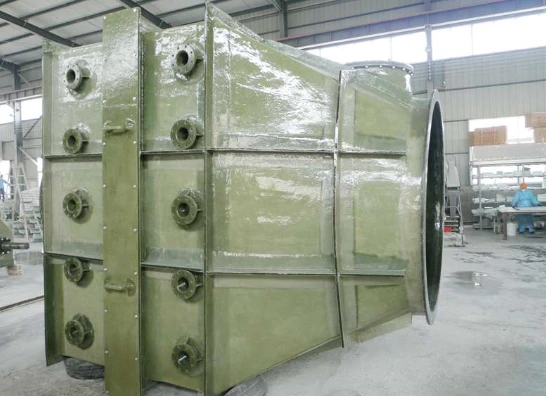
-
 Afrikaans
Afrikaans -
 Albanian
Albanian -
 Amharic
Amharic -
 Arabic
Arabic -
 Armenian
Armenian -
 Azerbaijani
Azerbaijani -
 Basque
Basque -
 Belarusian
Belarusian -
 Bengali
Bengali -
 Bosnian
Bosnian -
 Bulgarian
Bulgarian -
 Catalan
Catalan -
 Cebuano
Cebuano -
 China
China -
 China (Taiwan)
China (Taiwan) -
 Corsican
Corsican -
 Croatian
Croatian -
 Czech
Czech -
 Danish
Danish -
 Dutch
Dutch -
 English
English -
 Esperanto
Esperanto -
 Estonian
Estonian -
 Finnish
Finnish -
 French
French -
 Frisian
Frisian -
 Galician
Galician -
 Georgian
Georgian -
 German
German -
 Greek
Greek -
 Gujarati
Gujarati -
 Haitian Creole
Haitian Creole -
 hausa
hausa -
 hawaiian
hawaiian -
 Hebrew
Hebrew -
 Hindi
Hindi -
 Miao
Miao -
 Hungarian
Hungarian -
 Icelandic
Icelandic -
 igbo
igbo -
 Indonesian
Indonesian -
 irish
irish -
 Italian
Italian -
 Japanese
Japanese -
 Javanese
Javanese -
 Kannada
Kannada -
 kazakh
kazakh -
 Khmer
Khmer -
 Rwandese
Rwandese -
 Korean
Korean -
 Kurdish
Kurdish -
 Kyrgyz
Kyrgyz -
 Lao
Lao -
 Latin
Latin -
 Latvian
Latvian -
 Lithuanian
Lithuanian -
 Luxembourgish
Luxembourgish -
 Macedonian
Macedonian -
 Malgashi
Malgashi -
 Malay
Malay -
 Malayalam
Malayalam -
 Maltese
Maltese -
 Maori
Maori -
 Marathi
Marathi -
 Mongolian
Mongolian -
 Myanmar
Myanmar -
 Nepali
Nepali -
 Norwegian
Norwegian -
 Norwegian
Norwegian -
 Occitan
Occitan -
 Pashto
Pashto -
 Persian
Persian -
 Polish
Polish -
 Portuguese
Portuguese -
 Punjabi
Punjabi -
 Romanian
Romanian -
 Russian
Russian -
 Samoan
Samoan -
 Scottish Gaelic
Scottish Gaelic -
 Serbian
Serbian -
 Sesotho
Sesotho -
 Shona
Shona -
 Sindhi
Sindhi -
 Sinhala
Sinhala -
 Slovak
Slovak -
 Slovenian
Slovenian -
 Somali
Somali -
 Spanish
Spanish -
 Sundanese
Sundanese -
 Swahili
Swahili -
 Swedish
Swedish -
 Tagalog
Tagalog -
 Tajik
Tajik -
 Tamil
Tamil -
 Tatar
Tatar -
 Telugu
Telugu -
 Thai
Thai -
 Turkish
Turkish -
 Turkmen
Turkmen -
 Ukrainian
Ukrainian -
 Urdu
Urdu -
 Uighur
Uighur -
 Uzbek
Uzbek -
 Vietnamese
Vietnamese -
 Welsh
Welsh -
 Bantu
Bantu -
 Yiddish
Yiddish -
 Yoruba
Yoruba -
 Zulu
Zulu
fiberglass food grade equipment a closer look at its features and
A Closer Look at Fiberglass Food Grade Equipment Features and Benefits
In the food industry, safety and hygiene are paramount. One material that has garnered attention in recent years for its applicability in food handling and processing is fiberglass. Specifically, fiberglass food grade equipment has emerged as a reliable alternative to traditional materials, such as stainless steel and plastic. In this article, we will explore the key features and benefits of fiberglass food grade equipment, highlighting why it has become increasingly popular in food-related applications.
1. Composition and Safety Standards
Fiberglass, composed of fine glass fibers woven together and embedded in a resin, presents a unique combination of strength and flexibility. The food-grade fiberglass equipment is specially formulated to comply with safety standards established by organizations like the FDA (Food and Drug Administration) and USDA (United States Department of Agriculture). This ensures that the material is safe for direct contact with food, providing peace of mind to both manufacturers and consumers.
2. Durability and Maintenance
One of the standout features of fiberglass equipment is its remarkable durability. Unlike conventional materials that may corrode, rust, or degrade over time, fiberglass is resistant to a variety of environmental factors, including moisture, chemicals, and extreme temperatures. This resistance translates into a longer lifespan for equipment such as tanks, trays, and tables. Moreover, cleaning fiberglass surfaces is relatively easy, requiring minimal effort to maintain hygiene, which is crucial in food processing environments.
3. Lightweight and Versatile
Weighing significantly less than metal counterparts, fiberglass equipment is easier to handle and transport. This lightweight nature makes it an ideal choice for facilities that require mobility, allowing for quick reconfiguration of workspaces. Additionally, fiberglass can be molded into various shapes and sizes, making it highly versatile for diverse applications—from storage containers to processing equipment and work surfaces.
fiberglass food grade equipment a closer look at its features and

4. Non-reactive Properties
Fiberglass food grade equipment boasts non-reactive properties, meaning it does not leach harmful substances into food products. Unlike certain types of plastics, which may release chemicals when exposed to heat or certain foods, fiberglass remains inert. This characteristic is critical for maintaining the integrity and safety of food products, particularly in processes involving acids or other reactive substances.
5. Cost-effectiveness
While the initial investment in fiberglass food grade equipment may be higher than traditional materials, the longevity and reduced maintenance costs associated with fiberglass make it a cost-effective choice in the long run. Businesses can benefit from lower replacement frequencies and fewer maintenance interruptions, allowing for smoother operations and potentially increasing profitability.
6. Environmental Considerations
As awareness of environmental issues grows, many companies are seeking sustainable materials for their operations. Fiberglass can be crafted from recycled glass, and many manufacturers offer eco-friendly options to minimize impact on natural resources. Choosing fiberglass equipment not only supports operational efficiency but also aligns with environmental sustainability practices.
Conclusion
In summary, fiberglass food grade equipment presents a compelling choice for the food industry due to its durability, safety, and ease of maintenance. With its non-reactive properties, versatility, and potential cost savings, it is no wonder that more businesses are turning to fiberglass solutions. As the food industry continues to evolve and prioritize safety and sustainability, fiberglass stands out as a material that meets the demands of modern food handling and processing. Investing in fiberglass food grade equipment is not just a smart business move; it is a commitment to quality and safety in food production.









